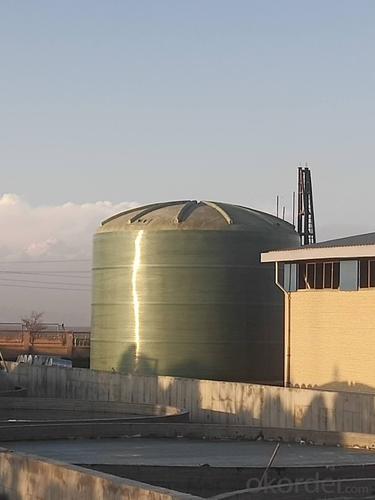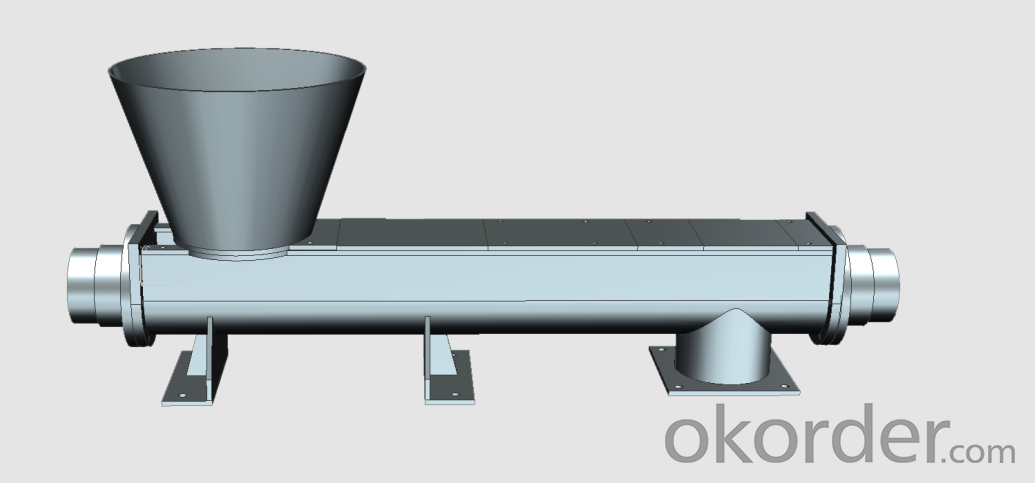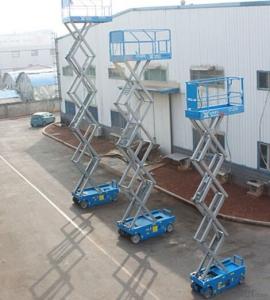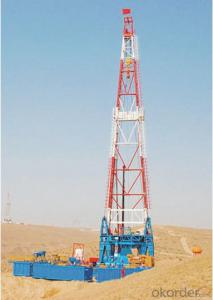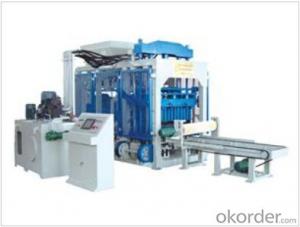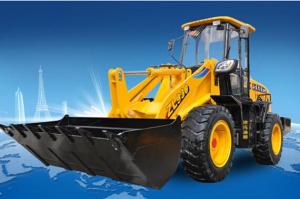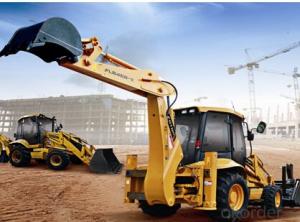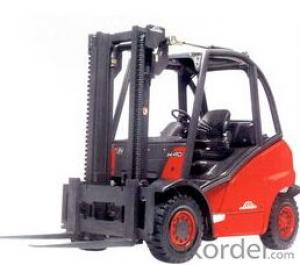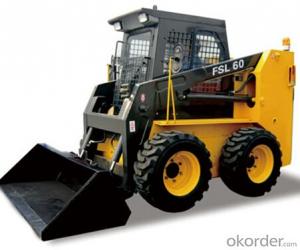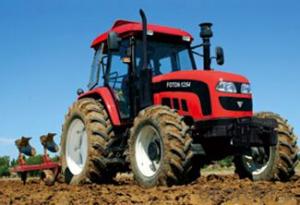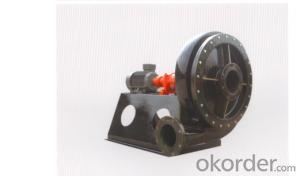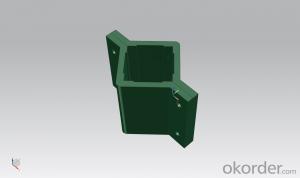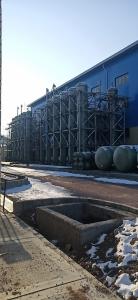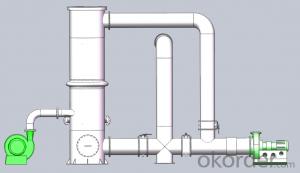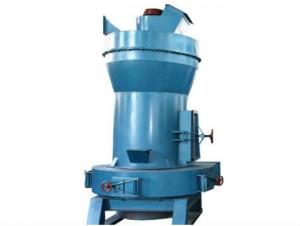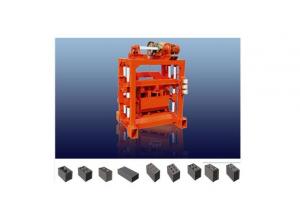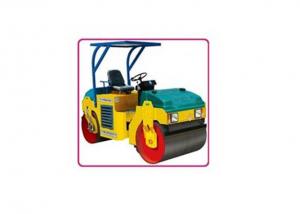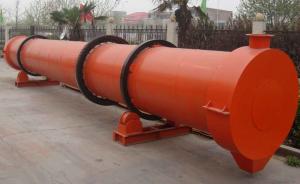CNBM Tons of Potassium Sulfate (SOP) Project equipments from SOP plant
- Loading Port:
- Shanghai
- Payment Terms:
- TT OR LC
- Min Order Qty:
- 1 set
- Supply Capability:
- 1 set/month
OKorder Service Pledge
OKorder Financial Service
You Might Also Like
Tons of Potassium Sulfate Project
General
CNBM is a high-tech enterprises international chemical engineering company, who is pioneering in chemical engineering technologies, and playing a leading role in new technology development, with capability of project consulting, design,procurement, construction management and production guidance. CNBM provide services of chemical engineering and technology, with offering a scope of supply ranging from process design till the supply of completely integrated plants. CNBM master a technology of Potassium Sulfate production line, Calcium Chloride production line,sulfuric acid production line other fertilizers.We have cooperated with many international companies on projects,located Indonesia,Philippines,India,Jordan,Egypt.etc.
Potassium sulfate product quality standard
Potassium sulfate | index | standard | |
| K2O:% | ≥50 | GB20406--2006 | |
| CL-:% | ≤1.0 | ||
| H2SO4:% | ≤0.5 | ||
| H2O:% | ≤1.0 | ||
Mannheim method potassium sulfate production process:
(1) It is a production process with little environmental pollution ;
(2) Mature technology, easy to industrialize production, improved new technologies and new processes, adapt to the requirements of the market economy, enhance the competitiveness of products in the market, the quality of potassium sulfate is good, and the output is high;
Main raw and auxiliary materials supply
| NO | Name | specification | Consumption | Total annual consumption |
| 1 | Potassium chloride | K20≥60% | 830Kg/t | 83,000 tons |
| 2 | sulfuric acid | 98% | 570Kg/t | 57,000 tons |
| 3 | lime | 40Kg/t | 400t |
Introduction to the preparation of potassium sulfate production plant by Mannheim method
Raw material for producing potassium sulfate
The raw material for the preparation of potassium sulfate by the Mannheim method is potassium chloride (KCL) which has K2O ≥ 60% and 98% sulfuric acid.In the production process, the hydrochloric acid system is made into tap water, and the heat required for the reaction is provided by natural gas combustion.
The nature and use of potassium sulfate
K2SO4
Colorless or white crystal or powder, bitter and salty
Melting point: 1069 ° C, soluble in water, insoluble in ethanol, acetone and carbon disulfide, the aqueous solution is slightly acidic.
Uses: 1. Agricultural fertilizer, used in tobacco, fruit trees, sugar cane, potatoes, vegetables, etc.
2, used as a drug (a laxative) and used in the manufacture of alum, glass and potassium carbonate.
Potassium sulfate quality specifications
Appearance: colorless or white crystal or powder.
Industrial synthetic hydrochloric acid
Relative molecular weight: 36.45
Performance: colorless transparent liquid, yellow when there is a small amount of impurities, strong acid is corrosive, can work with a variety of metals.
Uses: Important chemical raw materials for petroleum, metallurgy, printing and dyeing industries, etc.
Basic principle and process flow of potassium sulfate production
A fixed bed metathesis reaction method is employed. The solid potassium chloride and 98% sulfuric acid are continuously added to the reaction chamber at a certain ratio of feed, and the reaction is carried out under the condition of pushing the homogenate at a high temperature above 500 ° C (generally controlled at 500-530 ° C). . The raw material is continuously input under the condition of maintaining the normal bed surface, and the finished potassium sulfate is continuously discharged into the finished pusher from the outlet of the reaction chamber (symmetric two places), and enters the finished product through the gas seal conveyor under the action of cooling and stirring and pulverizing. The belt machine is then lifted, crushed, and finished with a scraper into the finished silo. The hydrogen chloride gas generated in the reaction is absorbed into water to prepare a hydrochloric acid and charged into a storage tank. Exhaust gas is discharged into the atmosphere in accordance with national emission standards.
H2SO4+2KCL →K2 SO4+2HCL-Q
H2SO4 → SO3+H2O-Q
HCL+H2O → HCL·H2O(HCl)+Q
SO3+H2O → H2SO4+Q
Production equipment overview
Potassium sulfate reactor
The reaction furnace is mainly composed of a combustion chamber (upper) reaction chamber (middle) flue chamber (lower part), and is equipped with a feeding and mechanical stirring pushing device. The core device of the Mannheim method is the reaction furnace. The purity of the product, the conversion rate, the production capacity and the difficulty of operation are all related to the reaction furnace. Therefore, reactor performance is the key to the process. The reaction furnace is mainly made up of a variety of special refractory materials. It has two cavities. The middle elliptical cavity is the reaction chamber. The chamber is equipped with stirring tweezers. When the reaction, the tweezers rotate at 1.1r/min, and the materials are continuously mixed and gradually. Push around the cavity. The upper cavity of the reaction furnace is a combustion chamber, and the combustion chamber has a burner, and the heat released by the fuel indirectly heats the reaction chamber.
Overview of the auxiliary equipment of the reactor system
1. The main machine (with large reducer and motor driven spindle) provides the effect of fabric, mixing and product removal.
2.Reheater: φ1000×4600, cold air and flue gas heat exchange, to preheat the air, reduce the heat loss in the furnace.
3.Potassium sulphate finished product pusher: The pusher barrel is accompanied by a cooling jacket, which functions as cooling, crushing and transfer of the finished product (n≈5.53r/min).
4.Gas-sealed screw conveyor: the function of finished product conveying and gas sealing.
5.Finished belt conveyor: The finished product is conveyed with cooling (with magnets - prevent the iron from entering the rear equipment).
6.Finished bucket elevator: finished product delivery.
7.Finished squeegee conveyor: The finished product is conveyed with cooling jacket.
8.Dust collection bucket, dust collection fan, distributor: collect the finished dust back to the silo.
9. Carbon cooler: After the hydrogen chloride gas at the outlet of the reaction chamber is cooled by the heat exchange, the temperature is lowered to about 50 ° C, and sent to a sulfuric acid gas scrubber.
Hydrochloric acid preparation, hydrogen chloride tail gas recovery and circulating water system
1. Sulfuric acid gas scrubber (with circulating acid pump, tank): packed tower, which absorbs trace SO3 and part of hydrogen chloride in the hydrogen chloride mixed gas from carbon cooler to ensure the quality of genuine hydrochloric acid (A acid), and The acid pump outlet sends out a portion of the mixed acid to the carbon cooler to wash a trace of dust from the gas in the reaction chamber to ensure the smoothness and cooling of the carbon cooler. The mixed acid (B acid) controls a certain B e0 to be sent to the B acid intermediate tank.
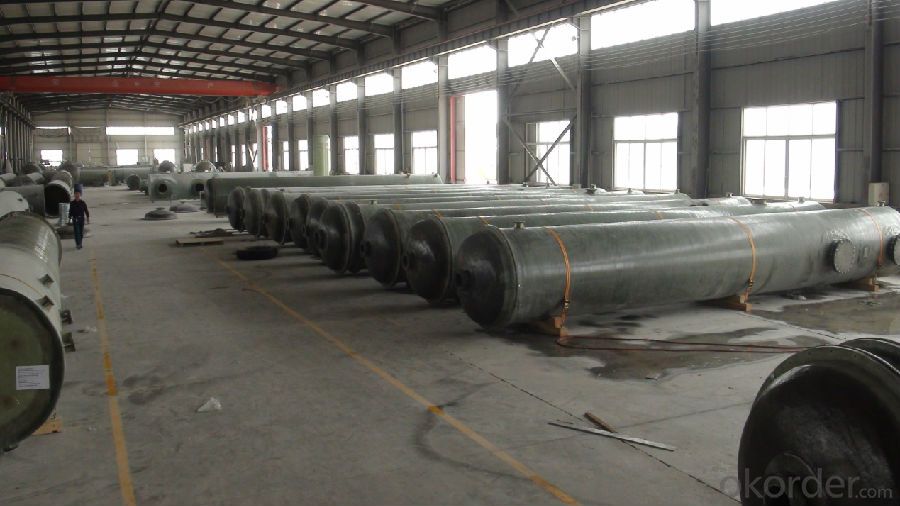
2. Hydrochloric acid absorption tower (falling film absorption tower) A: The falling acid absorption method (gas-liquid downstream) outlet acid control 18-19Be0 is sent to the intermediate tank of hydrochloric acid, and the three columns of hydrochloric acid absorption tower A are connected in parallel.
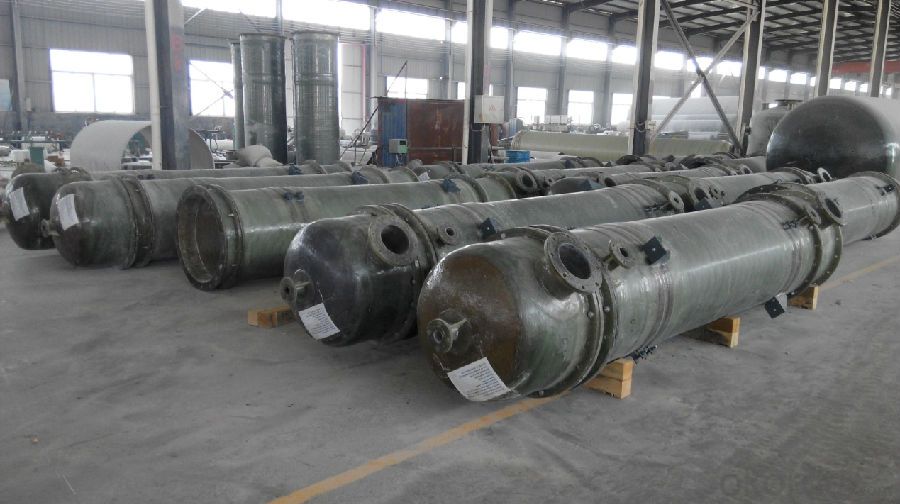
3. Hydrochloric acid absorption tower B: packed tower, gas-liquid countercurrent, acid solution enters hydrochloric acid absorption tower A, and hydrogen chloride tail gas is introduced into tail gas recovery tower through hydrogen chloride induced draft fan. The hydrochloric acid absorption tower B is connected in parallel in three.
4. Dilute acid high level tank: Provides a dilute acid solution for acid production at a stable liquid level. The dilute acid solution is from the 3# tail gas recovery tower and is cooled by a dilute acid cooler to enter a dilute acid high level tank.
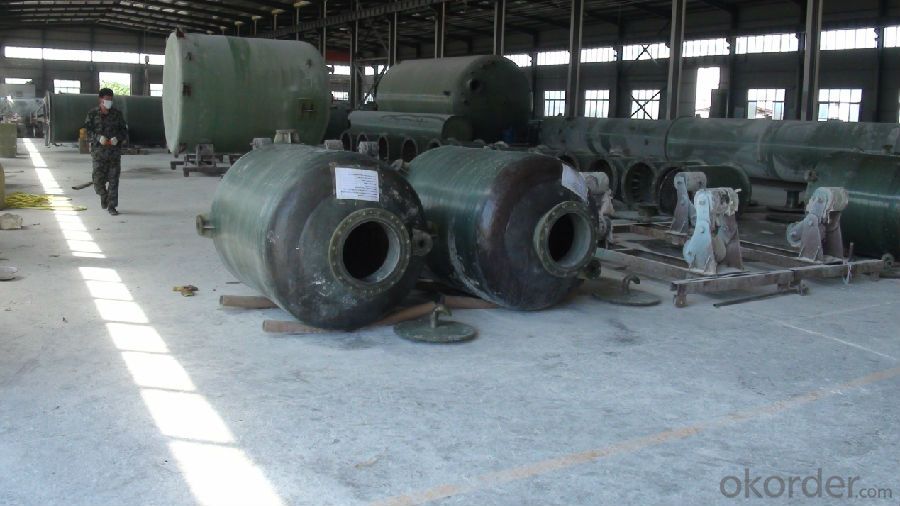
5. Hydrogen chloride tail gas recovery tower: (with circulating acid pump) packed four-column series (No. 3 → No. 6) gas-liquid countercurrent, the hydrogen chloride tail gas is basically absorbed after acid production. The tail gas is sequentially taken into the No. 3 → No. 6 exhaust gas recovery tower by the HCL exhaust fan and then discharged into the atmosphere (the exhaust gas emission complies with the national exhaust emission standard). The liquid phase flow is No. 6 → No. 5 → No. 4 → No. 3, No. 3 tower The higher concentration of dilute hydrochloric acid is sent to the sulfuric acid gas scrubber.
6. Hydrogen chloride tail gas exhaust fan: The hydrogen chloride gas is pumped in from the reaction chamber to the national atmospheric emission standard GB16297-1996, and discharged into the atmosphere through the exhaust gas chimney to maintain the micro-negative pressure in the reaction chamber to maintain the normal production of potassium sulfate.
7. Target fan: The hydrogen chloride gas is pumped into the process from the furnace door, and after being absorbed by the environmental protection tower, the exhaust gas chimney is discharged into the atmosphere.
8. Intermediate tank of hydrochloric acid (A, B acid): a total of four, a single tank volume of about 12 cubic meters (horizontal). It has the function of intermediate storage and transfer of hydrochloric acid.
- Q: What are the characteristics of gear transmission compared with other mechanical drives?
- Compared with other mechanical transmission gear, its characteristics are: small size, high transmission efficiency, constant transmission ratio, power is widely applicable.
- Q: And if not, what methods do they use to harvest crops?Please state your reference.Thanks
- Gee Levi, I am an organic farmer and I hardly spray my crops at all with pesticides. You do realize that organic pesticides are not persistent in the environment like synthetics that can persist in the soil and water for several years. organic pesticides are generally persistent for a couple of days. Did you know if you have a good balance of beneficial to pest insects you really don't need to spray much at all and you get a marketable crop. I have sprayed zero insecticides this season and so far have sold tons of food to the public. You are also assuming the growing produce is like orcharding-it is not. Apples, peaches etc if grown conventionally get sprayed down with some really nasty chemicals weekly. The organic folks also spray weekly but with things like soap, neem, Bt, lime sulfur, kelp. they also do things like bag each pomme which means almost no insecticide sprays after petal fall. So yes organic growers do use sprays but they are not the toxic sprays conventional growers use-you can eat an organic apple right after organic sprays are applied. Conventional apples cannot be sprayed within 6 weeks of harvest-so you see there is a huge difference in the sprays being used.
- Q: Why does it say do not use before work with heavy machinery on the back of childrens tylenol?
- Stupid thing to have on those bottles, maybe they're worried the kids who take it will be insensative to pain, use a jack hammer and cut off their foot... I can just see my 5 week old grandson driving the family SUV... my daughter would be very surprised, to say the least... or are they saying Tylenol will give them superpowers so they can do those things? Spooky!
- Q: Holy Cow! What happens if the Holy Spirit comes over you while driving or operating heavy machinery?
- Usually you continue to operate it like normal. Some times the person may take there hands off the controls and worship God, and the Holy Ghost takes the controls.
- Q: how to make paper pellets? i need a small, cheap, transportable machinery.?
- Try pulping and squizing it through a industial meat grinder then drying it in a barrel or old dryer
- Q: How to improve mechanical design ability!
- How to improve the mechanical design ability, it is necessary to improve the continuous understanding and accumulation of mechanical processing. It is important to see more, think more and draw inferences from other issues. The ability of mechanical design is how to put the mechanics formula and mechanical principle to design drawings in your ability.
- Q: I'm trying to get a quote on shipping a heavy sand blaster from New York to Oregon, but I'm can't figure out what this freight class is that I'm being asked for. Thanks
- I've okorder /
- Q: I would like to start building some home projects and do small crafts, maybe work on some small furniture projects. I would like this to last me a long time.
- Delta makes some great tools. Problem with most newer tools is that they went from cast iron tables to aluminum. This causes more vibration since it is lighter. Even a great saw is no better than the cutting tools used on them, so make sure you buy premium blades.. I think you will be very happy for a long time with the Delta.
- Q: I mean, if you have a gate that squeaks, you oil the gate, don't you?Is it inhumane of me to think of people's problems in a similar fashion?I get the emotional aspect of it, i just find it easier to look at things in this way...
- No it's not inhumane, it's putting thing in perspective which you can understand for the purposes of empathizing with that person. Just don't let that person know how you have related their personal problems to mechanical malfunction or they will see you as belittling their problem.
- Q: I'm interested in investing in candle lantern manufacturing because of low competition in my local area but I'm not sure where to start and what equipment would be needed to start manufacturing on low scale. Is there any good read on how are lanterns recycled and what additional equipment would be needed to recycle them? Please go into as much details as possible.
- From my understanding, most of these candle lanterns are hand- made.
Send your message to us
CNBM Tons of Potassium Sulfate (SOP) Project equipments from SOP plant
- Loading Port:
- Shanghai
- Payment Terms:
- TT OR LC
- Min Order Qty:
- 1 set
- Supply Capability:
- 1 set/month
OKorder Service Pledge
OKorder Financial Service
Similar products
Hot products
Hot Searches
Related keywords






